Jane Austen's Life & Work
To support our Jane Austen Tour and provide depth to Jane's character we present these snapshots. They are a collection of concise, informative articles that highlight various aspects of Jane's life, her literary career, and the historical context in which she wrote. Each piece offers a detailed, yet accessible look at significant moments and themes related to Jane, and will hopefully engage both casual readers, dedicated Janeites and enthusiasts of English literature.
The Lost Works: Jane's Early Efforts
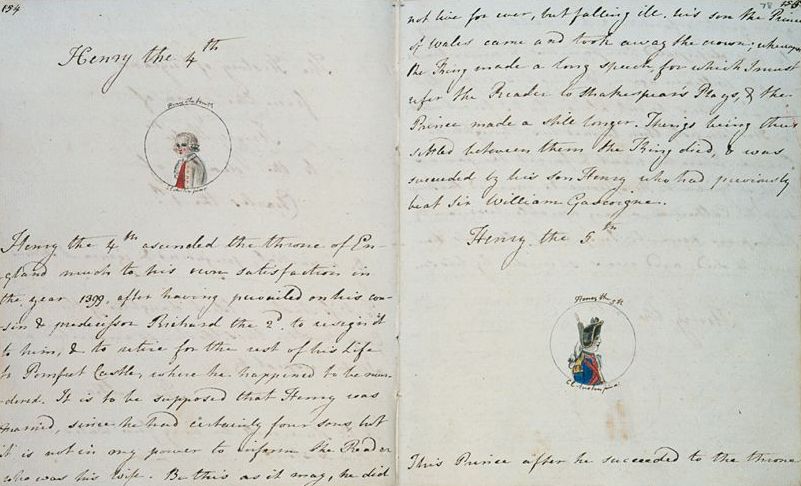
Pages from Jane's History of England.
Before she became the celebrated author of classics like "Pride and Prejudice," Jane Austen wrote numerous juvenile works and unfinished stories. These early efforts, known as the Juvenilia, were penned between the ages of 11 and 17 and include short stories, plays, and parodies
The Juvenilia reveals Austen's developing style and her burgeoning talent for satire and character development. Works like "Love and Freindship" [sic] and "The History of England" showcase her playful use of language and her sharp sense of humour. These writings often parody the popular literature of her time, demonstrating her early critical engagement with literary forms.
Among her unfinished works are "The Watsons" and "Lady Susan," which offer intriguing insights into the themes and character types she would later refine in her major novels. "The Watsons" explores themes of social mobility and family dynamics, while "Lady Susan" features a manipulative and charming anti-heroine.
These early writings provide valuable context for understanding Austen's growth as a writer. They highlight her innate storytelling abilities and her keen eye for social critique, which would come to full fruition in her later works.
Sources
- Jane Austen's letters, ed. Deirdre Le Faye, 4th edition (Oxford: Oxford University Press, 2011).
- Tomalin, Claire. "Jane Austen: A Life." (New York: Alfred A. Knopf, 1997).
The Social Satirist: Austen's Sharp Wit
Jane Austen's novels are celebrated for their sharp social satire, a reflection of her keen observational skills and incisive wit. She had an extraordinary ability to dissect the manners and customs of her time, often exposing the absurdities and hypocrisies of society.
Austen's satire is most evident in characters like Mr. Collins from "Pride and Prejudice," whose obsequiousness and sycophancy are portrayed with delightful humour. Similarly, Mrs. Bennet's preoccupation with marrying off her daughters is both amusing and a critique of the societal pressure on women to secure advantageous marriages.
Her novels also highlight the limited roles available to women and the social pressures they faced. Through her heroines, Austen champions intelligence, integrity, and independence, subtly challenging the norms of her day.
Austen's ability to blend humour with social critique has made her novels enduringly popular. Her witty commentary on human nature and society continues to resonate, proving the timelessness of her insights.
Sources
- Tomalin, Claire. "Jane Austen: A Life." (New York: Alfred A. Knopf, 1997).
- Johnson, Claudia L. "Jane Austen: Women, Politics, and the Novel." (Chicago: University of Chicago Press, 1988).
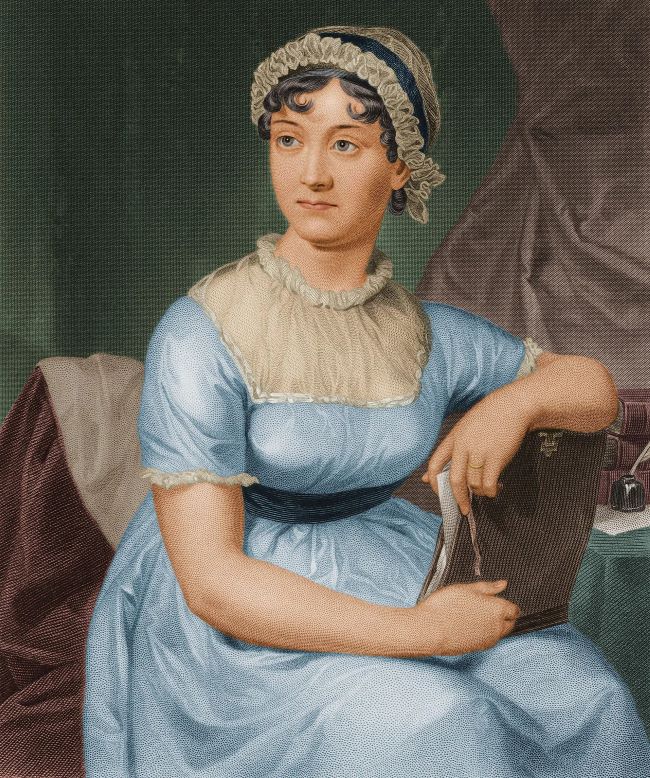
Jane Austen, an engraving, circa 1810. After a portrait by her sister, Cassandra.
The Reverend's Daughter: Austen's Clerical Connections.
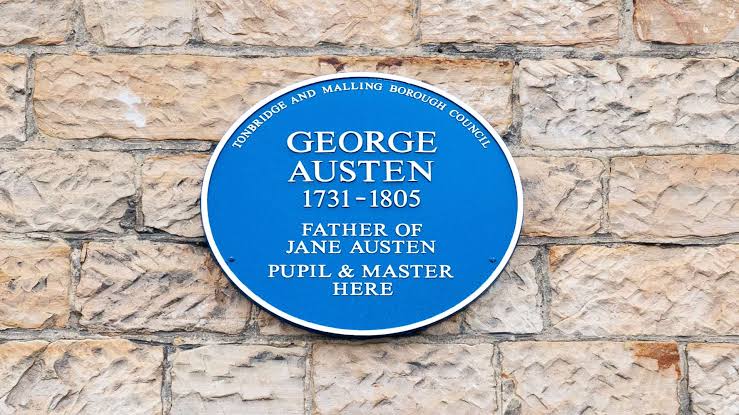
A commemorative plaque at the Cawthorn Lecture Theatre at Tonbridge School where George Austen was a pupil and then a master.
Jane Austen's father, George Austen, was a clergyman, a role that significantly shaped her life and work. Growing up in the rectory at Steventon, Jane was immersed in the rhythms and duties of church life, which provided her with a deep understanding of the clergy's role in society.
This background is evident in her novels, where clergymen often play important roles. Characters like Mr. Collins in "Pride and Prejudice," Mr. Elton in "Emma," and Edmund Bertram in "Mansfield Park" are all clergy members, each with distinct personalities and moral compasses. Austen's portrayal of these characters ranged from the comically sycophantic to the genuinely principled, showcasing her nuanced view of the clergy.
Austen's intimate knowledge of the church and its societal implications allowed her to create realistic and relatable clergy characters. Her depictions often highlighted the challenges and expectations faced by clergymen, providing a richer context for her stories.
Through her detailed and sometimes critical portrayals, Austen added depth to her novels, making them resonate with readers then and now.
Sources
- Le Faye, Deirdre. "Jane Austen: A Family Record." (Cambridge: Cambridge University Press, 2004).
- Tomalin, Claire. "Jane Austen: A Life." (New York: Alfred A. Knopf, 1997).
Jane Austen's Navy Brothers: Inspiration from the High Seas
Jane Austen had two brothers, Francis (Frank) and Charles, who both enjoyed successful careers in the Royal Navy. Their naval experiences and adventures provided Austen with a wealth of material for her writing. Frank and Charles rose to the ranks of Admiral and Rear-Admiral, respectively, and their stories of life at sea and naval engagements fascinated Austen.
These experiences vividly influenced her final completed novel, "Persuasion," where the character of Captain Wentworth, a dashing and determined naval officer, plays a central role. The novel's naval backdrop and detailed depiction of life in the navy owe much to her brothers' firsthand accounts.
Austen's admiration for her brothers' careers is evident in her affectionate portrayal of naval officers in "Persuasion." The novel highlights the virtues of the navy and the opportunities it provided for merit-based advancement, which contrasted with the rigid social hierarchies on land.
Through her brothers' stories, Austen gained insights into the naval world, which she skilfully wove into her narrative, enriching the authenticity and depth of her characters and settings.
Sources
- Tomalin, Claire. "Jane Austen: A Life." (New York: Alfred A. Knopf, 1997).
- Nokes, David. "Jane Austen: A Life." (Berkeley: University of California Press, 1997).
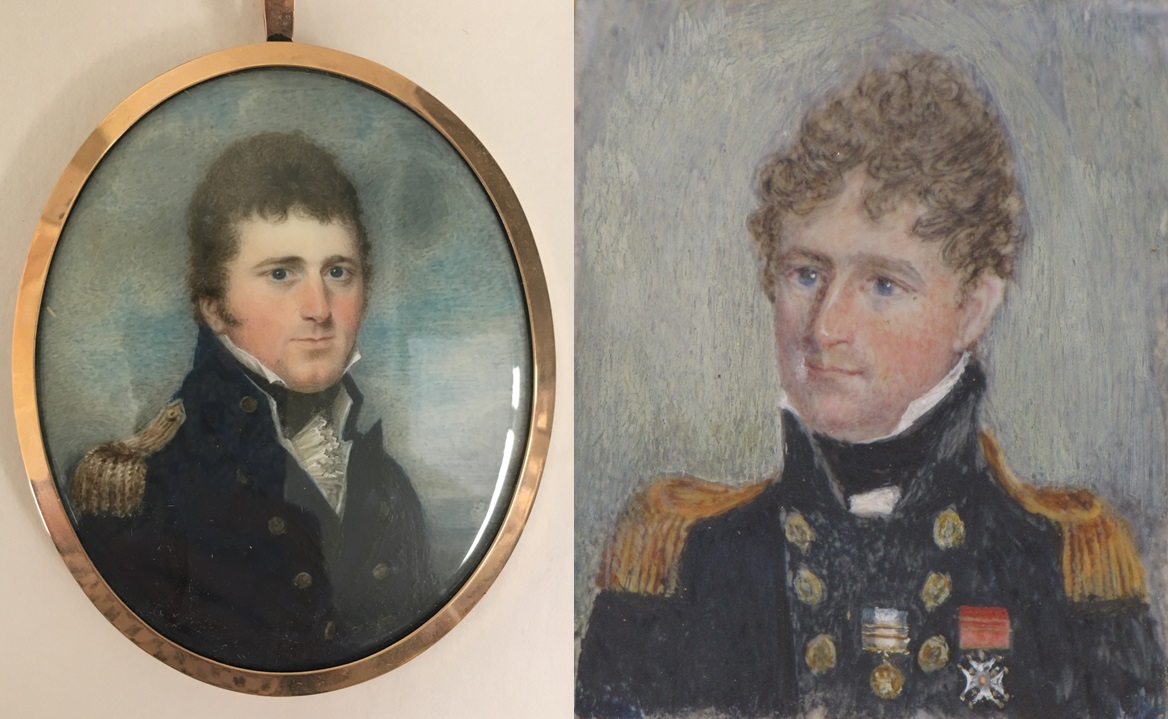
Francis (Frank) and Charles Austen.
The Critical Champion: Sir Walter Scott's Praise for Jane Austen.
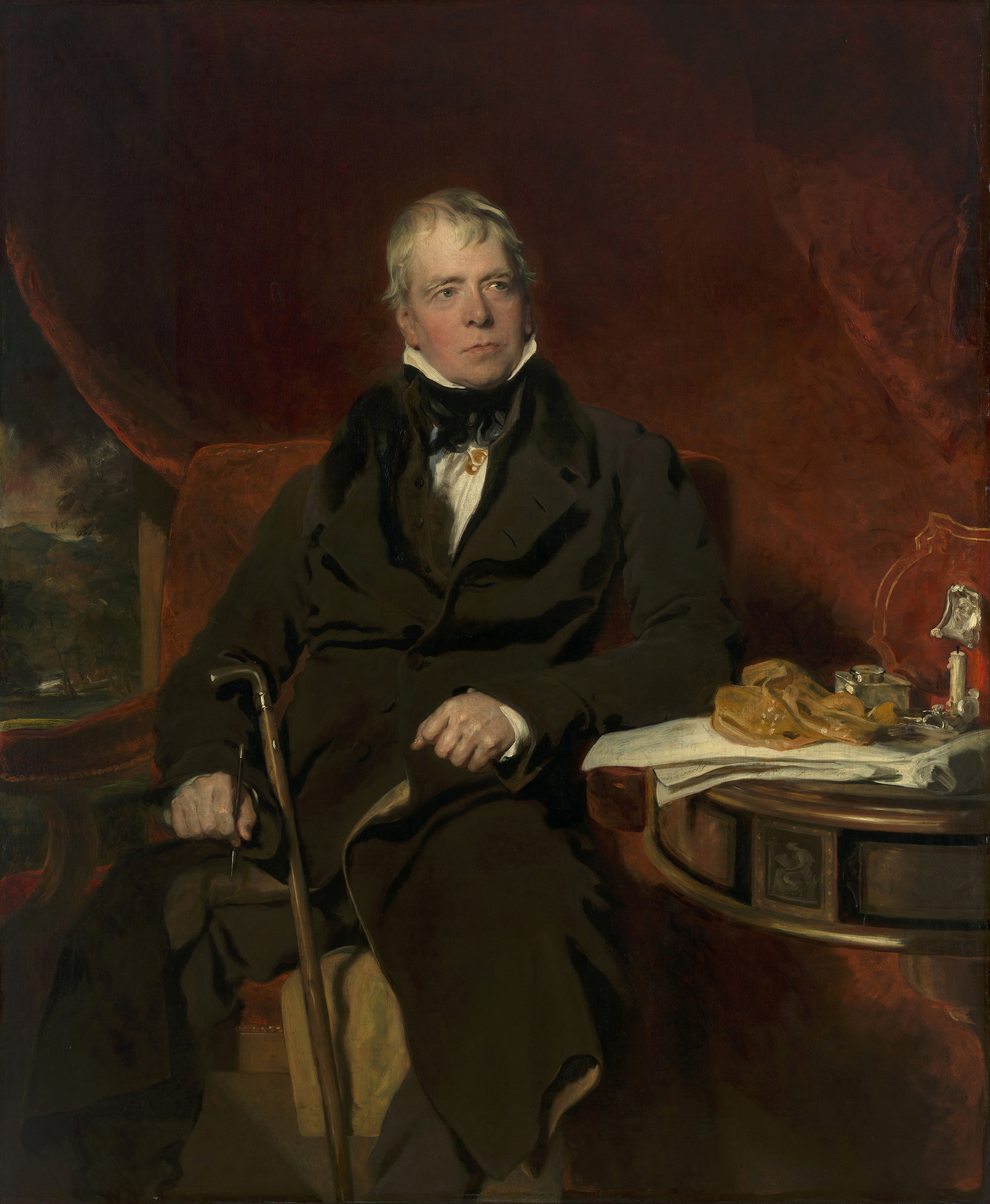
Portrait of Sir Walter Scott by Thomas Lawrence, c. 1826.
Sir Walter Scott, a celebrated author of the early 19th century, admired Jane Austen's novels. In his 1826 journal, Scott wrote, "That young lady had a talent for describing the involvements and feelings and characters of ordinary life, which is to me the most wonderful I ever met with. The big bow-wow strain I can do myself like any now going; but the exquisite touch, which renders ordinary commonplace things and characters interesting, from the truth of the description and the sentiment, is denied to me."
Scott's praise was significant, coming from a contemporary who understood literary craft. He highlighted Austen's ability to depict everyday life with precision and grace, contrasting with his own more dramatic narratives.
Despite her novels' modest initial reception, Scott's recognition helped cement Austen's reputation as a master of the novel form. His endorsement emphasized the enduring quality of her work, which still resonates today.
Scott's admiration also shows the respect between great writers, proving that literary greatness transcends styles and genres. Austen's detailed character studies and social critiques remain influential, demonstrating her timeless appeal.
Sources
- Scott, Walter. "The Journal of Sir Walter Scott," ed. W.E.K. Anderson (Edinburgh: Canongate, 1998).
- Tomalin, Claire. "Jane Austen: A Life." (New York: Alfred A. Knopf, 1997).
A Room of Her Own: Jane Austen's Writing Space
Jane Austen's writing space at Chawton Cottage, where she spent her last eight years, was modest. Her small, round table near a window provided a view of the world outside, inspiring her keen social observations.
This simple setting is where she revised "Sense and Sensibility," "Pride and Prejudice," and "Mansfield Park," and wrote "Emma," "Persuasion," and "Northanger Abbey." Despite its simplicity, her productivity flourished in Chawton.
A creaking door, which Austen refused to repair, alerted her to visitors, giving her time to hide her manuscripts. This was necessary when women's creative work was often undervalued.
Austen's disciplined routine of working in the mornings and walking in the afternoons shows her dedication to her craft. Her ability to create rich, detailed worlds from such a modest setting is a testament to her talent.
Sources
- Tomalin, Claire. "Jane Austen: A Life." (New York: Alfred A. Knopf, 1997).
- Le Faye, Deirdre. "Jane Austen: A Family Record." (Cambridge: Cambridge University Press, 2004).
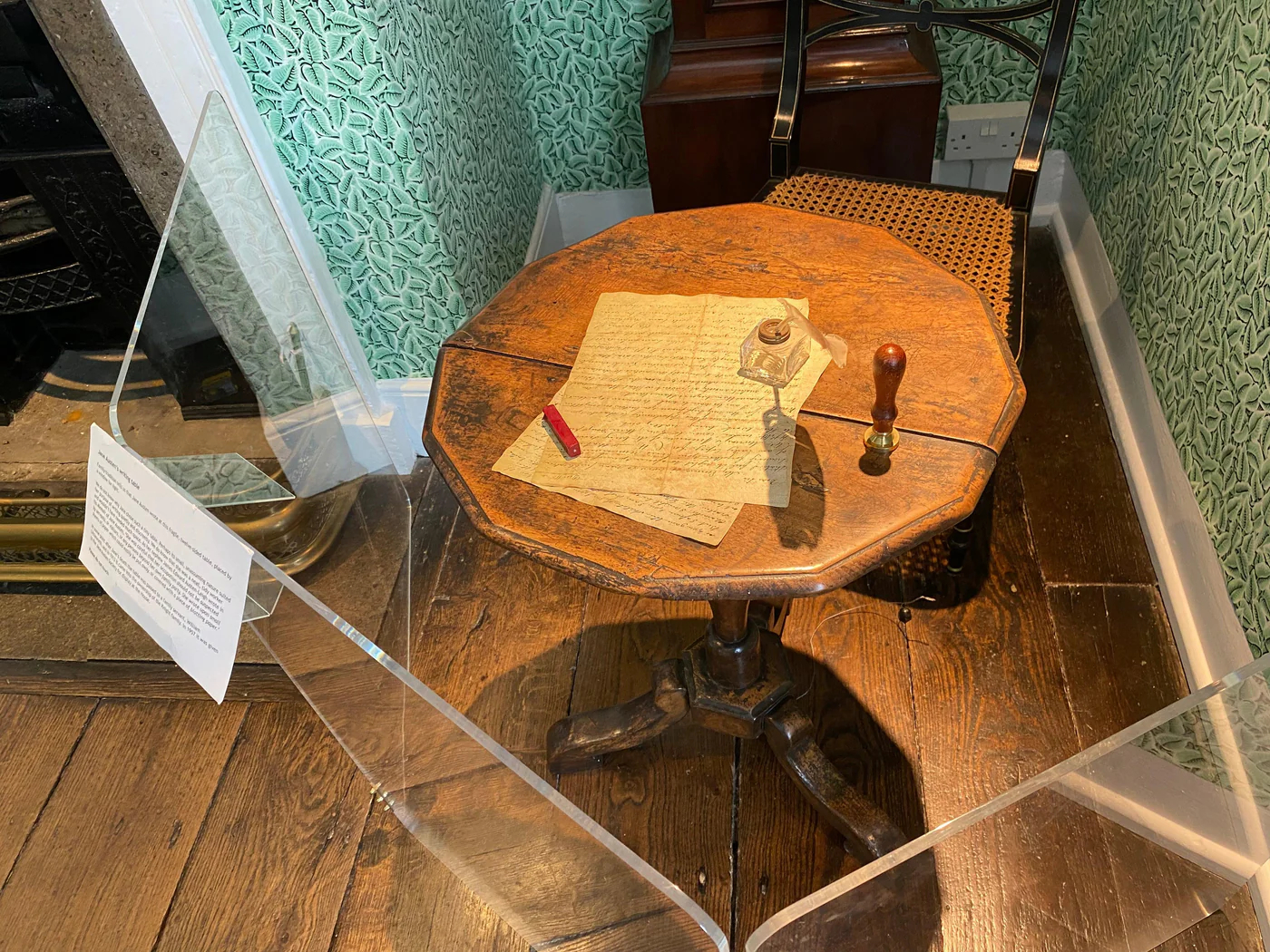
Janes modest writing table preserved at Chawton Cottage.
The Unfinished Masterpiece: "Sanditon" and Jane Austen's Final Days.

The surviving Sanditon manuscript.
In early 1817, Jane began a new novel titled "Sanditon," exploring the development of a seaside resort town, reflecting the changing social landscape. The twelve completed chapters reveal Austen's interest in social mobility and economic speculation.
"Sanditon" features characters like the entrepreneurial Mr. Parker and the pragmatic heroine Charlotte Heywood. The novel has a slightly more satirical tone, showcasing Austen's sharp wit.
Sadly, Janes health was deteriorating by this time, and she was unable to finish "Sanditon." She passed away in July 1817, leaving the novel incomplete. Despite this, "Sanditon" offers valuable insights into her evolving style.
The unfinished manuscript wasn't published until 1925, over a century after Austen's death. It has inspired various adaptations, allowing fans to imagine how she might have developed the story.
Sources
- Austen-Leigh, James Edward. "A Memoir of Jane Austen." (London: Richard Bentley, 1870).
- Tomalin, Claire. "Jane Austen: A Life." (New York: Alfred A. Knopf, 1997).
The Mysterious Suitor: Jane Austen's Brief Engagement
In 1802, at the age of 27, Jane surprised her family by accepting a marriage proposal from Harris Bigg-Wither, a wealthy but rather unremarkable suitor. Bigg-Wither was the younger brother of her close friends, the Bigg sisters, making the match seem practical.
However, within 24 hours, Jane had reconsidered and broke off the engagement. She likely realized she didn't love him, and marrying without affection contradicted the values she championed in her novels.
This decision demonstrated Janes commitment to her principles and her bravery in defying societal expectations. It also mirrored the themes in her books, where heroines often grapple with the pressure to marry for security rather than love.
Janes choice to remain single allowed her to create some of the most beloved heroines in literature, who navigate their lives with intelligence and integrity.
The story of Janes brief engagement to Bigg-Wither, is the subject of Phil Howes short play, Twelve Hours.
Sources
- Tomalin, Claire. "Jane Austen: A Life." (New York: Alfred A. Knopf, 1997).
- Le Faye, Deirdre. "Jane Austen: A Family Record." (Cambridge: Cambridge University Press, 2004).

December 3rd 1802 - Harris Bigg-Wither proposes to Jane Austen
The Unassuming Debut: How Jane Austen Published Anonymously

Sense and Sensibility - By A Lady - Published 1811.
When "Sense and Sensibility" was published in 1811, it bore the simple credit "By A Lady." This choice was common for female authors of the time, who often faced prejudice in the literary world. Jane Austen, valuing her privacy, chose to remain anonymous.
Despite the lack of a name on the cover, the novel was well-received and earned Austen £140. Critics and readers alike praised its engaging characters and the nuanced exploration of emotion versus reason.
Austen's brother Henry played a vital role in her publishing journey, acting as her informal agent. Even as her fame grew with subsequent novels like "Pride and Prejudice" and "Mansfield Park," she continued to publish anonymously. It wasn't until after her death in 1817 that her family revealed her identity, cementing her place in literary history.
Sources
- Jane Austen's letters, ed. Deirdre Le Faye, 4th edition (Oxford: Oxford University Press, 2011)
- Tomalin, Claire. "Jane Austen: A Life." (New York: Alfred A. Knopf, 1997).